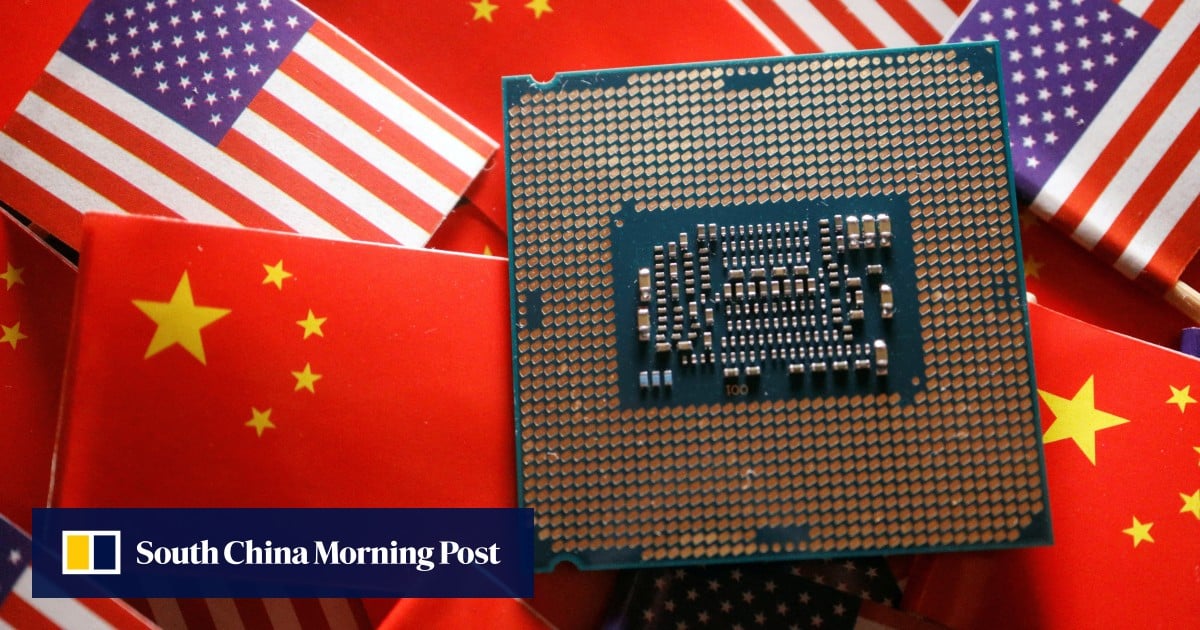At a prominent state-owned semiconductor company in the technology hub of Shenzhen, China, there is a growing concern about an “expanding disparity” in artificial intelligence (AI).
During an informal discussion on Tuesday in Beijing at the Chinese People’s Political Consultative Conference (CPPCC) – the top political advisory body in the country – Zeng Yi, a delegate leading the China Electronics Corporation based in Shenzhen, expressed that his company still has a “significant distance” to cover to match the United States.
Zeng addressed a small audience of representatives from the science and technology community and emphasized that, despite their considerable efforts, the gap between his company and the US remains substantial.
While China emphasizes the development of ‘new productive forces’, with a focus on self-reliance in science and technology to drive the transformation of the Chinese economy amidst increasing technology restrictions from the US, Zeng highlighted the challenges his company faces in keeping up with the competition.
He stressed that without decisive and innovative actions, the gap between China and other leading nations in AI could widen further as new advancements emerge rapidly.
Zeng pointed out that the issues in information technology advancement cannot be resolved solely through creating practical applications or making breakthroughs in specific technologies. He emphasized that the challenges extend beyond talent and basic research, causing significant concerns among industry professionals.
Zeng’s company specializes in national cybersecurity and information security technology, chip research and design, semiconductor equipment, advanced manufacturing processes, and operating systems.
In the realm of technology development, China has traditionally relied on imports of US chips and essential Western equipment. However, with the imposition of US sanctions limiting Chinese access to critical tools like advanced graphics processing units from Nvidia, a prominent AI chip manufacturer, the need for domestic technological independence has become more pressing.
Both state-owned enterprises and private companies are now under pressure to accelerate the country’s domestic technology capabilities to reduce reliance on foreign sources.
Although China’s AI sector has been considered competitive in the ongoing technological rivalry with the US, recent advancements such as the introduction of OpenAI’s Sora and ChatGPT have raised doubts about China’s pace in catching up with its American counterparts.
To address these challenges, Chinese tech firms have reassured that chip restrictions will not impede their AI development in the short term. They have either utilized existing inventories or turned to domestic AI chip producers for solutions.
Following the recent launch of Sora, the State-owned Assets Supervision and Administration Commission, overseeing companies like Zeng’s, has advised government-controlled firms to adapt to the significant transformations brought about by AI.
In terms of global computing capabilities, particularly intelligent computing power derived from AI chips, China holds the second position at 33%, slightly behind the US at 34%, surpassing Europe and Japan at 17% and 4%, respectively, according to the China Academy of Information and Communications Technology.
As China’s economy undergoes a ‘structural upgrade’, the prioritization of technology development has become paramount.
Reports indicate that Huawei, in particular, has emerged as a potential competitor in AI chips, especially after introducing its new AI chipset – Huawei Ascend 910B – which became accessible through distributors in mainland China.
The tech behemoth surprised the market last August by unveiling its first 5G smartphone, the Mate 60 Pro, in response to US sanctions.










